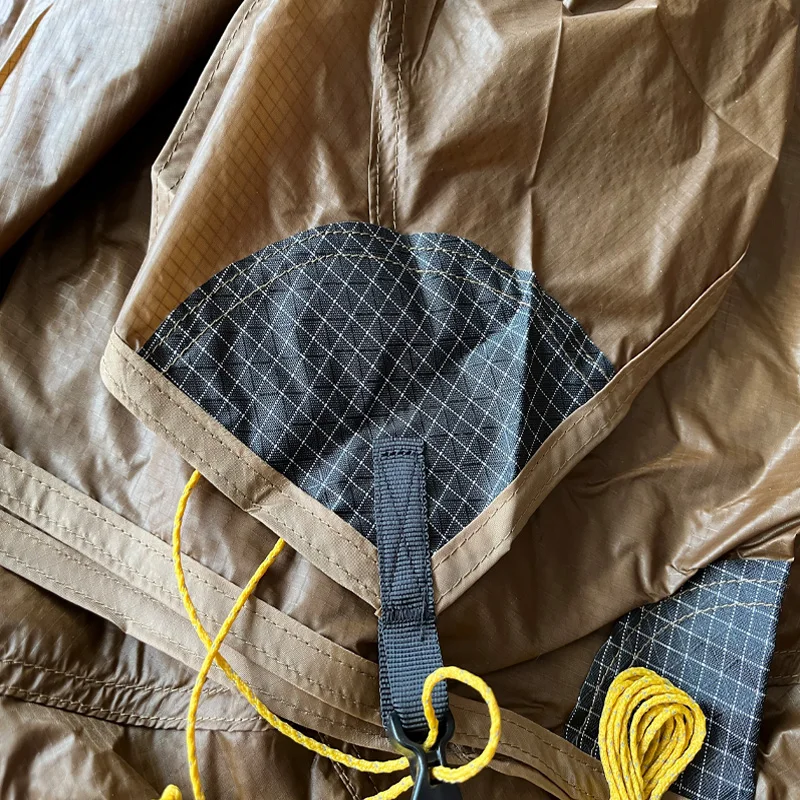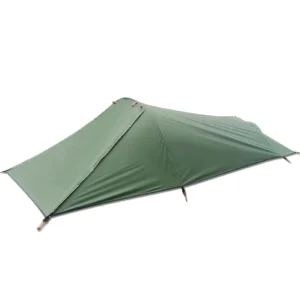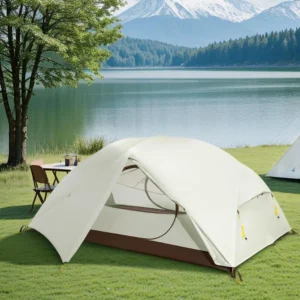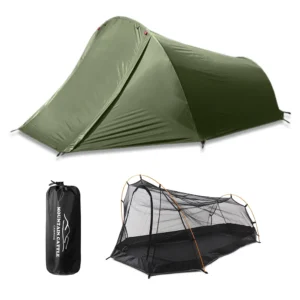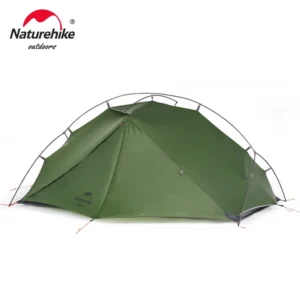Introduction: Understanding Trekking Pole Shelters in Modern Backpacking
Trekking pole supported shelters represent one of the most significant innovations in lightweight backpacking gear. Unlike traditional tents that come with dedicated pole structures, these shelters ingeniously use the hiking poles you’re already carrying to create their framework.
The concept is elegantly simple: rather than packing separate tent poles that serve only one purpose, trekking pole shelters leverage equipment you’re already using for hiking to provide structural support for your shelter. This dual-purpose approach has become increasingly popular among backpackers seeking to minimize weight without sacrificing protection from the elements.
These versatile shelters come in several common designs:
– Pyramids (single or double peak)
– A-frame structures
– Shaped tarps with integrated bug netting
– Modified dome designs
For years, the ultralight community has embraced these shelters, and their popularity continues to grow as more hikers discover the numerous advantages they offer over conventional tents. Understanding different shelter options for two campers is essential when weighing these benefits against your specific needs.
In this comprehensive analysis, we’ll explore how these innovative trekking pole tent designs deliver exceptional performance while reducing pack weight and volume. You’ll discover why many experienced backpackers now prefer these shelters over traditional freestanding tents for extended wilderness adventures.
Significant Weight Reduction: The Ultimate Backpacker’s Advantage
The most compelling advantage of trekking pole shelters is their dramatic weight reduction compared to conventional tents. By eliminating dedicated tent poles, which typically weigh 8-16 ounces (227-454 grams), these shelters significantly lighten your load. This weight saving may seem small in isolation, but for distance hikers, every ounce matters.
Consider this comparison of popular shelters:
| Shelter Type | Average Weight | Base Weight Impact |
|---|---|---|
| Traditional 2-person tent | 3-5 lbs (1.4-2.3 kg) | High |
| Trekking pole 2-person shelter | 1-2.5 lbs (0.45-1.1 kg) | Low to Moderate |
| Weight savings | 1.5-3 lbs (0.7-1.4 kg) | Significant |
These weight reductions create a cascade of benefits:
– Less fatigue during long hiking days
– Ability to cover more distance with the same effort
– Reduced strain on joints and muscles
– Option to carry more water or food instead
For serious backpackers, “base weight” (the weight of all gear excluding consumables like food and water) is a critical metric. Switching to a trekking pole shelter can reduce base weight by 5-10%, a substantial improvement that experienced ultralight trekking tent users consistently report makes a noticeable difference in comfort and hiking performance.
Explore Elements offers several ultralight trekking pole tent options that demonstrate these impressive weight savings while maintaining protection from the elements.
Enhanced Packability: Transforming Your Backpack Space
Beyond weight reduction, trekking pole shelters offer remarkable advantages in packability and volume efficiency. Without rigid poles, these shelters can compress down to surprisingly small packages that transform how you organize your backpack.
The packability benefits include:
- Compression to approximately half the volume of comparable traditional tents
- More flexible packing shapes (can conform to available spaces in your pack)
- Ability to separate components (rainfly, inner mesh) for distributed packing
- No rigid poles means no awkward shapes to accommodate
This volume efficiency allows backpackers to use smaller, lighter packs or create more space for other essentials. A typical trekking pole shelter might compress to the size of a large water bottle (approximately 5×8 inches or 13×20 cm), while a comparable traditional tent often requires twice that volume.
The space-saving aspect becomes particularly valuable on extended trips where food storage requires significant pack volume. Learning effective tent packing tips can further maximize these space-saving benefits.
For those prioritizing minimal pack size, our selection of compact backpacking tents offers excellent packability without sacrificing necessary protection.
Multi-Purpose Equipment: Maximizing Gear Efficiency
The brilliance of trekking pole shelters lies in their fundamental philosophy: why carry separate items when one can serve multiple functions? This multi-use approach represents a core principle of lightweight backpacking.
Trekking poles provide numerous benefits during hiking:
– Reduced impact on knees and joints (up to 25% on descents)
– Improved balance on challenging terrain
– Assistance during river crossings
– Enhanced hiking rhythm and efficiency
– Improved stability on steep or slippery surfaces
These same poles then transform into crucial structural components for your shelter at camp. This dual functionality creates what backpackers call a “weight credit” – you’re effectively carrying shelter poles for “free” since you’d be bringing the trekking poles anyway.
Understanding which compatible trekking poles for tents work best with different shelter designs helps maximize this efficiency. The best poles balance strength, weight, and adjustability to perform well in both hiking and shelter support roles.
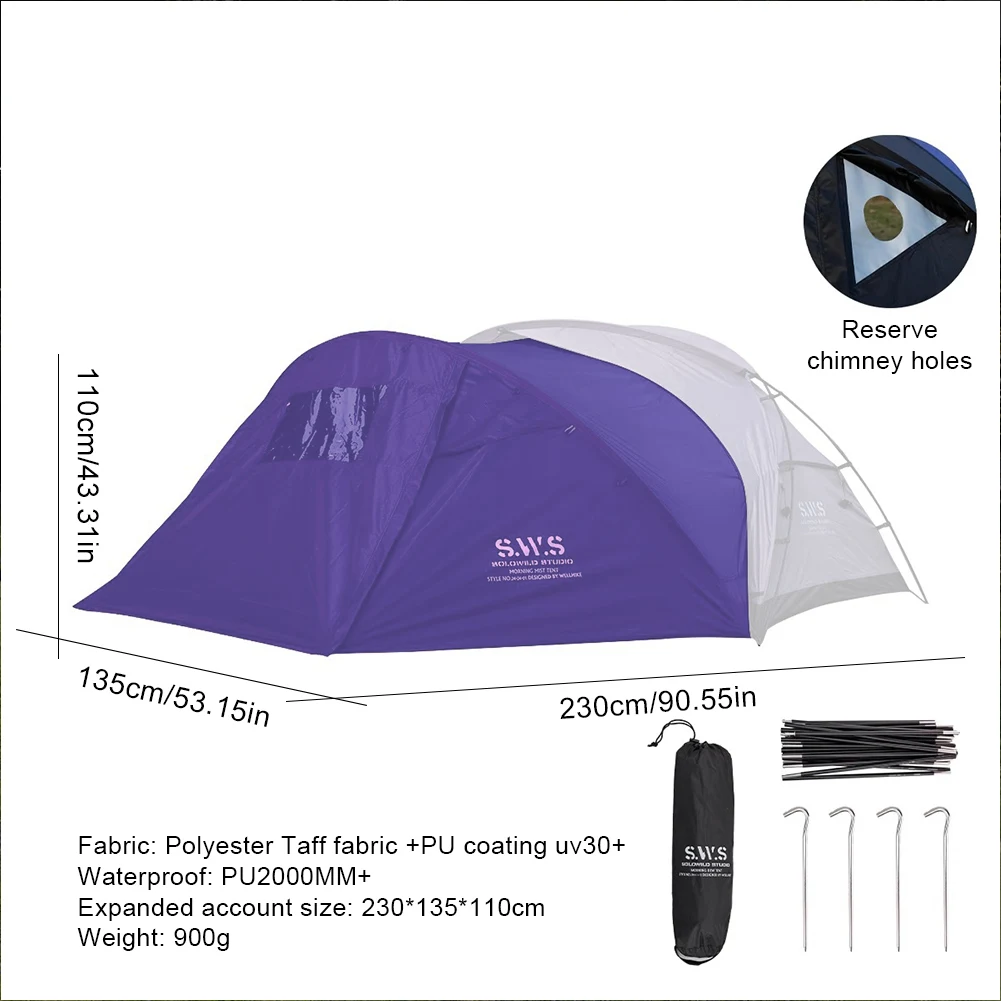
Our trekking pole backpacking tent collection features designs specifically engineered to make the most of this dual-purpose advantage.
Superior Structural Integrity: Strength and Stability in the Elements
Contrary to what some might assume, quality trekking pole shelters often offer exceptional structural integrity in challenging conditions. The materials used in premium trekking poles – typically aluminum alloy or carbon fiber – provide strength-to-weight ratios that equal or exceed many dedicated tent poles.
The structural advantages include:
- Trekking poles often have larger diameters than typical tent poles, providing greater rigidity
- Adjustable height allows for optimal tension and pitch in varying conditions
- Low-profile designs (particularly pyramids) excel in high winds with proper orientation
- Simple designs with fewer moving parts mean fewer potential failure points
- Snow-shedding capabilities of pyramid designs handle winter loads effectively
Many trekking pole tent structures utilize geometric principles that efficiently distribute forces across the entire shelter. The sloped walls of pyramid designs, for instance, naturally shed wind, rain, and snow better than some vertical-walled traditional tents.
For those frequently facing challenging weather conditions, our 4-season winter 2-person tents collection includes trekking pole supported options specifically designed for structural integrity in harsh environments.
Efficient Setup and Site Adaptability: Pitch-Perfect Performance
Trekking pole shelters offer unique advantages in setup efficiency and site adaptability once users master the learning curve. One significant benefit is the ability to pitch the rainfly first, keeping your inner shelter dry during rainy setups – something many traditional tents can’t offer.
With practice, many experienced users can set up trekking pole shelters in 2-5 minutes. The simplified design, with fewer poles and connection points, contributes to this efficiency.
The adjustable height of trekking poles also allows for customized pitching based on:
– Weather conditions (lower in high winds, higher for better ventilation)
– Available space constraints
– Terrain challenges
– Desired interior volume
This adaptability extends to challenging terrain where traditional tents struggle. Rocky ground, soft sand, or uneven surfaces can all be accommodated through creative pole positioning and guy-line strategies. Understanding proper trekking pole tent setup techniques significantly enhances this versatility.
For those camping on difficult terrain, mastering trekking pole tent setup skills becomes invaluable for creating a stable, comfortable shelter regardless of the campsite limitations.
Advanced Weather Management: Ventilation and Condensation Control
Effective weather management is crucial for any shelter, and trekking pole designs offer some distinct advantages in this area. Many feature sophisticated ventilation systems that help control condensation – a common challenge in lightweight shelters.
Key ventilation features often include:
– Catenary (curved) ridgelines allowing air gaps
– Adjustable peak vents that create chimney effects
– Ability to raise sides for maximum airflow in good weather
– Variable pitch heights to optimize airflow based on conditions
Proper pitch plays a crucial role in ventilation performance. The adjustable nature of trekking poles allows users to fine-tune the shelter’s shape for optimal airflow while maintaining protection from precipitation.
Tips for minimizing condensation in trekking pole shelters:
– Select sites with natural airflow when possible
– Avoid camping directly beside water sources
– Leave doors partially open when conditions allow
– Adjust pole height to increase internal volume
– Use a small pack towel to wipe down condensation in the morning
For those concerned about weather protection, our waterproof backpacking tent options include trekking pole models with excellent ventilation systems that maintain waterproof integrity.
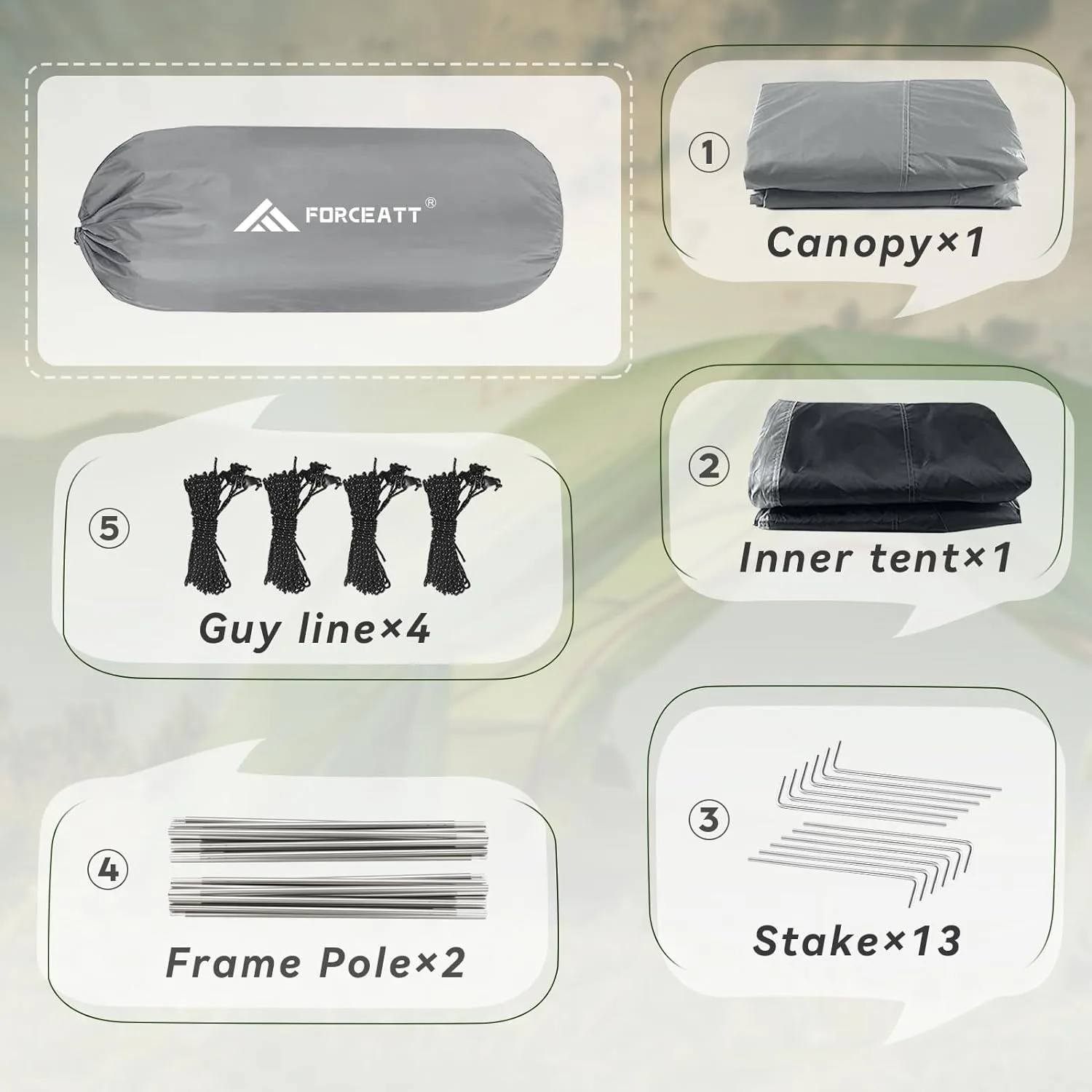
Cost-Effectiveness Analysis: Value Beyond the Price Tag
While premium trekking pole shelters often carry higher initial price tags than entry-level traditional tents, a proper value analysis reveals surprising cost-effectiveness over time. The comprehensive value proposition includes several factors beyond the sticker price.
The cost structure comparison typically shows:
| Cost Factor | Trekking Pole Shelter | Traditional Tent |
|---|---|---|
| Initial purchase | $250-500 | $150-400 |
| Replacement poles | $0 (using hiking poles) | $30-80 |
| Weight “cost” | Lower | Higher |
| Pack size “cost” | Lower | Higher |
| Durability | High with proper care | Variable |
The premium materials often used in trekking pole shelters – such as silnylon, Dyneema Composite Fabric (DCF), or silpoly – typically offer excellent durability-to-weight ratios. Understanding how these lightweight trekking shelter materials affect performance helps justify the investment for serious backpackers.
For those already using trekking poles, the elimination of dedicated tent poles represents a hidden savings both financially and in terms of carried weight, making these shelters an excellent long-term value.
Ideal Users: Who Benefits Most from Trekking Pole Shelters?
While trekking pole shelters offer numerous advantages, they particularly excel for specific user groups and applications:
Thru-hikers and Long-Distance Backpackers
Those covering hundreds or thousands of miles benefit most from the weight savings and packability. On a 2,000-mile trail, every ounce multiplied by millions of steps makes a significant difference in comfort and endurance.
Ultralight Enthusiasts
Backpackers focusing on minimalist approaches appreciate how these shelters help achieve base weights below 10 pounds while maintaining protection from elements.
Fast-and-Light Adventurers
Those moving quickly through terrain with minimal overnight stops value the rapid setup and breakdown capabilities.
Backpack Hunters
The space efficiency, weight savings, and subdued colors/shapes of many trekking pole shelters make them ideal for hunting applications where carrying capacity for game meat becomes a priority.
Lightweight Backpacking Tent, Ultralight Backpacking Tent, Ultralight Bivy Tent
Ultralight Single Person Camping Tent with Aluminum Poles for 3-Season Backpacking Waterproof DesignPrice range: $94.88 through $326.82 Select options This product has multiple variants. The options may be chosen on the product pageLightweight Backpacking Tent, Ultralight Backpacking Tent, Waterproof Backpacking Tent
$391.05 Select options This product has multiple variants. The options may be chosen on the product pageHeavy Duty 4 Season Tent, Mountaineering Tent, Winter Camping Tent
$870.40 Select options This product has multiple variants. The options may be chosen on the product pageCompact Backpacking Tent, Lightweight Backpacking Tent, Waterproof Camping Tent
$335.52 Select options This product has multiple variants. The options may be chosen on the product pageUltralight Backpacking Tent, Ultralight Dome Tent, Winter Camping Tent
Price range: $369.63 through $370.07 Select options This product has multiple variants. The options may be chosen on the product pageHeavy Duty 4 Season Tent, Ultralight Freestanding Tent, Winter Camping Tent
$3,722.66 Select options This product has multiple variants. The options may be chosen on the product page
When choosing the ultimate compact shelter for two, these user profiles help determine if trekking pole designs align with your specific needs and hiking style. Our selection of ultralight backpacking tents includes options tailored to each of these user types.
Practical Considerations: Mastering the Learning Curve
While trekking pole shelters offer impressive advantages, they do require some adaptation and skill development compared to freestanding tents. Understanding these practical considerations helps set realistic expectations and ensures a successful transition.
Key considerations include:
- Learning curve: Most users report 3-5 setups before achieving confidence and efficiency
- Site selection: More important than with freestanding tents; flat areas with good staking potential are ideal
- Staking requirements: Nearly all trekking pole shelters require multiple stake points for proper setup
- Interior space: Often has sloped walls that reduce usable volume compared to vertical-walled tents
- Backup plans: Consider carrying lightweight pole repair options or knowing how to use sticks/branches in emergency situations
Tips for mastering trekking pole shelters more quickly:
– Practice setup in your yard or a local park before backcountry trips
– Watch tutorial videos for your specific shelter model
– Mark optimal pole heights with small indicators for quick reference
– Carry extra stakes and guylines until you’ve mastered setup techniques
Understanding the differences between freestanding vs staked hiking shelters helps set appropriate expectations and preparation strategies.
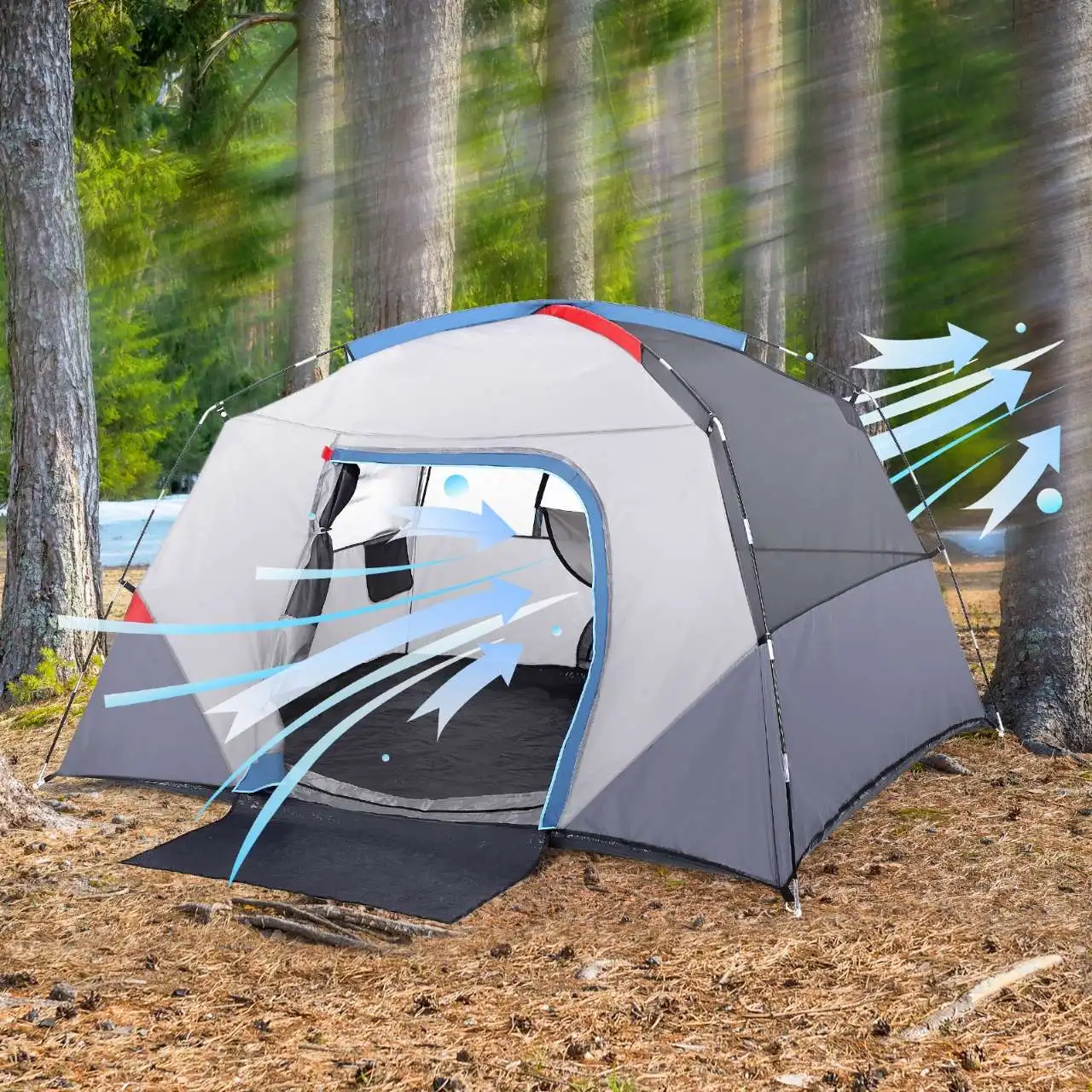
Supplemental Content: Frequently Asked Questions About Trekking Pole Shelters
Are trekking pole shelters suitable for winter camping?
Yes, many trekking pole shelters excel in winter conditions. Pyramid designs in particular handle snow loads effectively due to their steep walls. Look for models with stronger materials, reinforced stress points, and adequate ventilation to manage condensation in cold weather. However, not all trekking pole shelters are winter-worthy – verify the specific model’s season rating before using in harsh conditions.
What exactly makes a shelter “ultralight” versus just “lightweight”?
In the backpacking community, “ultralight” shelters typically weigh under 2 pounds (907g) for a 1-person model or under 3 pounds (1.36kg) for a 2-person shelter. “Lightweight” generally refers to shelters between these weights and about 4 pounds (1.8kg) for 1-person or 5 pounds (2.3kg) for 2-person designs. Ultralight shelters often achieve their weight savings through specialized materials like Dyneema Composite Fabric, simplified designs, and reduced features.
Which types of hikers should consider alternatives to trekking pole shelters?
Hikers who don’t regularly use trekking poles, those who frequently camp on surfaces that can’t be staked (solid rock, platforms), or backpackers prioritizing quick setup in varied conditions might prefer traditional freestanding tents. Additionally, those who value more vertical interior walls for livability might find traditional tents more comfortable despite the weight penalty.
How do single-wall trekking pole shelters compare to double-wall designs in condensation management?
Single-wall shelters are typically lighter but more prone to condensation as moisture from your breath contacts the cooler outer wall. Double-wall designs provide better condensation management by creating a barrier between your body’s moisture and the outer rainfly, but at a weight penalty. Single-wall shelters can manage condensation through strategic ventilation, site selection, and proper pitching techniques.
Can you effectively use trekking pole shelters without trekking poles?
Yes, though this negates one of their primary advantages. Most manufacturers offer compatible lightweight poles specifically for their shelters. In emergency situations, appropriately sized sticks can substitute for trekking poles, though with less stability and adjustability. Some hikers who don’t use trekking poles still choose these shelters for their weight and packability benefits, carrying dedicated carbon fiber tent poles instead.
What features distinguish premium trekking pole shelters from budget options?
Premium trekking pole shelters typically offer higher-quality materials (DCF/Dyneema, silpoly, high-grade silnylon), reinforced stress points, more sophisticated ventilation systems, better waterproofing, and more refined designs with features like multiple doors or vestibules. Budget options often use heavier materials, simpler designs, and may have less attention to detail in seam sealing and reinforcement. The durability, weather resistance, and weight differences usually justify the higher cost for frequent backpackers.
For those considering various options, exploring different camping shelter options for two can help identify the perfect balance between weight, convenience, and protection for your specific hiking style.

